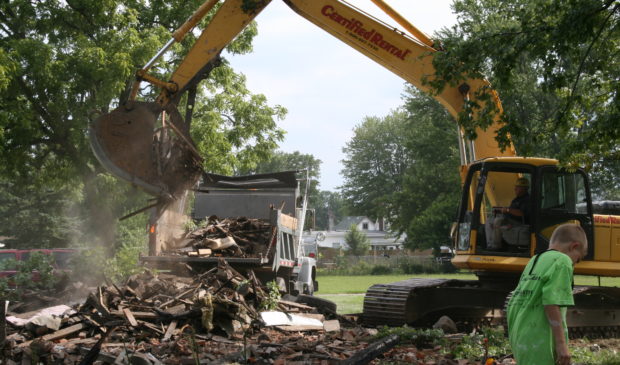How do demolitions affect Austin’s affordable housing stock?
Wednesday, January 25, 2017 by
Jack Craver As Austin grapples with its affordability crisis, much of the focus has been on how city leaders can incentivize developers to build new housing that includes units reserved for residents at certain income levels.
Some city leaders, however, suggest that the city may be neglecting, or even encouraging the destruction of, the largest existing source of housing for those of modest means: privately owned, market-rate housing.
A 2014 report by HousingWorks found that the city had 62,000 unsubsidized units affordable to those at 60 percent of the median family income or less, compared to only 18,500 income-restricted units. In addition to being more plentiful, market-rate units carry the additional benefit of not burdening city taxpayers with management or monitoring expenses, notes a resolution that City Council will take up Thursday.
An obvious challenge, however, is that a large percentage of the low-cost market-rate housing is older and likely to soon be demolished and replaced with more expensive units. The incentives to demolish are particularly strong in the context of a booming population, including many well-to-do newcomers in search of luxury housing.
It’s an issue that Mayor Pro Tem Kathie Tovo wants the city to consider as it approaches CodeNEXT, its long-delayed overhaul of the Land Development Code.
The resolution she is asking Council to approve will direct city staff and the consultants working on crafting CodeNEXT “to evaluate the potential net loss or gain of market affordable housing” that will result from changes to zoning or entitlements in the new code.
The city, notes the resolution, should strive “to ensure that proposed changes to the Land Development Code do not inadvertently incentivize the demolition of existing market rate affordable units, especially family-friendly units.”
In addition, the resolution calls on staff to identify properties that could be acquired by the affordable housing strike fund. The strike fund, a concept championed by Mayor Steve Adler that is still being developed, is a private entity funded by private investors that will acquire and manage housing aimed at middle-income tenants.
Council Member Greg Casar unveiled an amendment that he plans to offer to the resolution that calls on staff to not only assess the potential loss of market-rate affordable units, but the potential gain of subsidized affordable units.
While Tovo’s resolution focuses on housing affordable to those between 60 percent MFI and 120 percent MFI, Casar’s broadens it to include those living at as low as 40 percent MFI.
The amendment “is meant to clarify what I think everybody wants from the resolution,” Casar later told the Austin Monitor.
Casar also made the point that much of the loss of affordable units comes from property owners who renovate their properties or simply raise rents in response to the influx of wealthier residents.
Council Member Jimmy Flannigan wondered whether certain older units could truly be classified as “affordable” if they are either “unlivable” or in need of expensive renovation. Tovo conceded that “some of what is nonsubsidized affordable housing is substandard housing.”
Flannigan also suggested that the city incorporate transportation into its affordability calculation. There are plenty of low-cost units in his suburban district in Northwest Austin, he said, but many of the people who occupy them have to spend heavily on transportation to get to work elsewhere in the city.
Adler said he liked the idea of focusing on a broad range of incomes, including those living at above the area median, many of whom are also moving outside of the city to find cheaper housing. He does not want to see Austin become like San Francisco.
“The only people in San Francisco are those who can afford really expensive homes or those in subsidized homes,” he said.
Photo by Fought70 made available through a Creative Commons license.
The Austin Monitor’s work is made possible by donations from the community. Though our reporting covers donors from time to time, we are careful to keep business and editorial efforts separate while maintaining transparency. A complete list of donors is available here, and our code of ethics is explained here.
You're a community leader
And we’re honored you look to us for serious, in-depth news. You know a strong community needs local and dedicated watchdog reporting. We’re here for you and that won’t change. Now will you take the powerful next step and support our nonprofit news organization?









